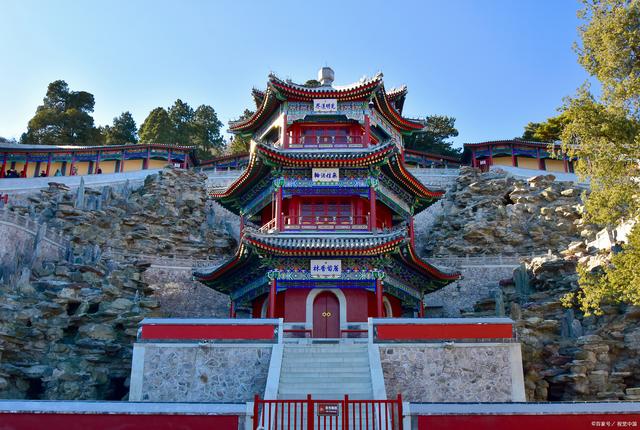Fragrant Hills Park

Located on the west side of Beijing,Fragrant Hills is a large forest park with the characteristics of imperial gardens in which natural landscape is combined with artificial scenery. It is more than 20 kilometers from Beijing and covers an area of 160 hectares. Its highest peak, 557 meters above sea level, looks like a huge incense burner, so it gets the name “Incense Burner Peak.” (Xiang Lu Feng [Shan]): the name Fragrant Hills (Xiang Shan) is derived from this.
Fragrant Hills has a very long history. A park was established in 1186, during the Jin Dynasty, and renovated by emperors of the Jin, Yuan, Ming and Qing Dynasties (1115-1911). In 1745, Emperor Qianlong ordered large-scale construction. At that time, 28 beautiful scenes with enclosing walls were set up and named Jingyi Park by the emperor. The Anglo-French Army and the Eight Power Allied Forces burned it to ashes in 1860 and 1900 respectively.
In March 1949, the Central Committee of the Chinese Communist Party was headquartered at Fragrant Hills. Comrade Mao Zedong lived in Shuangqing Villa, from where he directed the famous “Crossing the Chang Jiang River Campaign” during the War of Liberation. Fragrant Hills was formally opened as a park in 1956. After extensive reconstruction, it again took on its unique charm, and has become a famous tourist resort. Visitors can enjoy quiet, ancient scenes, myriad beautiful flowers in early spring, a cool holiday in the summer, red leaves in late fall, and splendid snow scenes in winter. Fragrant Hills has developed into a world-renowned forest park that attracts large numbers of visitors from China and abroad.
There are three convenient roads for enjoying the park. Along the northern road, are Glasses Lake, Cascade Cave, Fine-Day and Jian Xin Pavilions, Zhao Temple, Glazed Pagoda and the Geyun Bell. Along the middle road are Tingxue, Purple Mist, and Wangfeng Pavilions, Zhisong Garden, Lotus Lawn, Yuhua Villa, Snow-On-the-West Mountain, Incense-Burner Peak, Chongyang Garret, etc. Along the southern road there are Green Lake, Dai Shui Ping Shan, Green Pavilion, Gem Rock, Complacency Moat, the Red Leaves Scenery, Sermon Pine, relics of Fragrant Hills Temple, Toad Peak, Happiness Garden, Shuangqing Villa, White-Pine Pavilion, Sen Yu Hu and Plum Stone, etc. Visitors can take an 18-minute cable car ride to the top of Incense Burner Peak while leisurely enjoying the beautiful scenery below and get an excellent view of Beijing.

